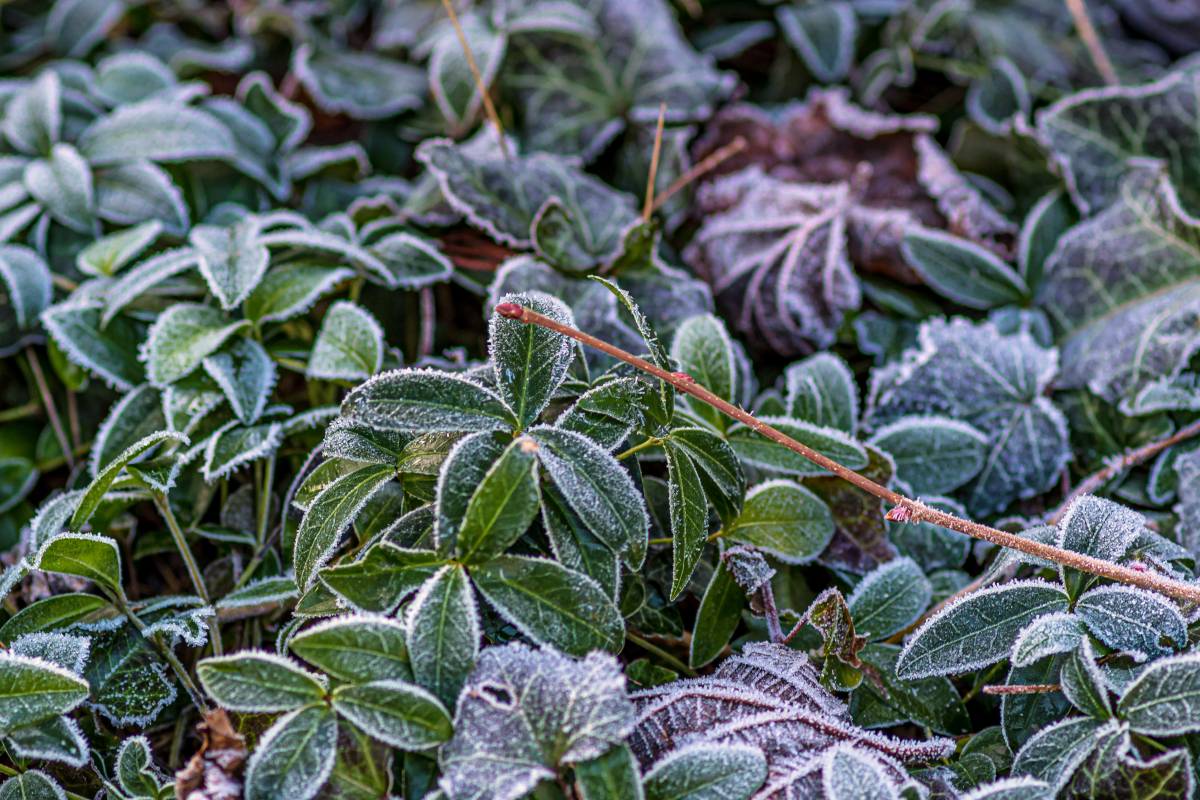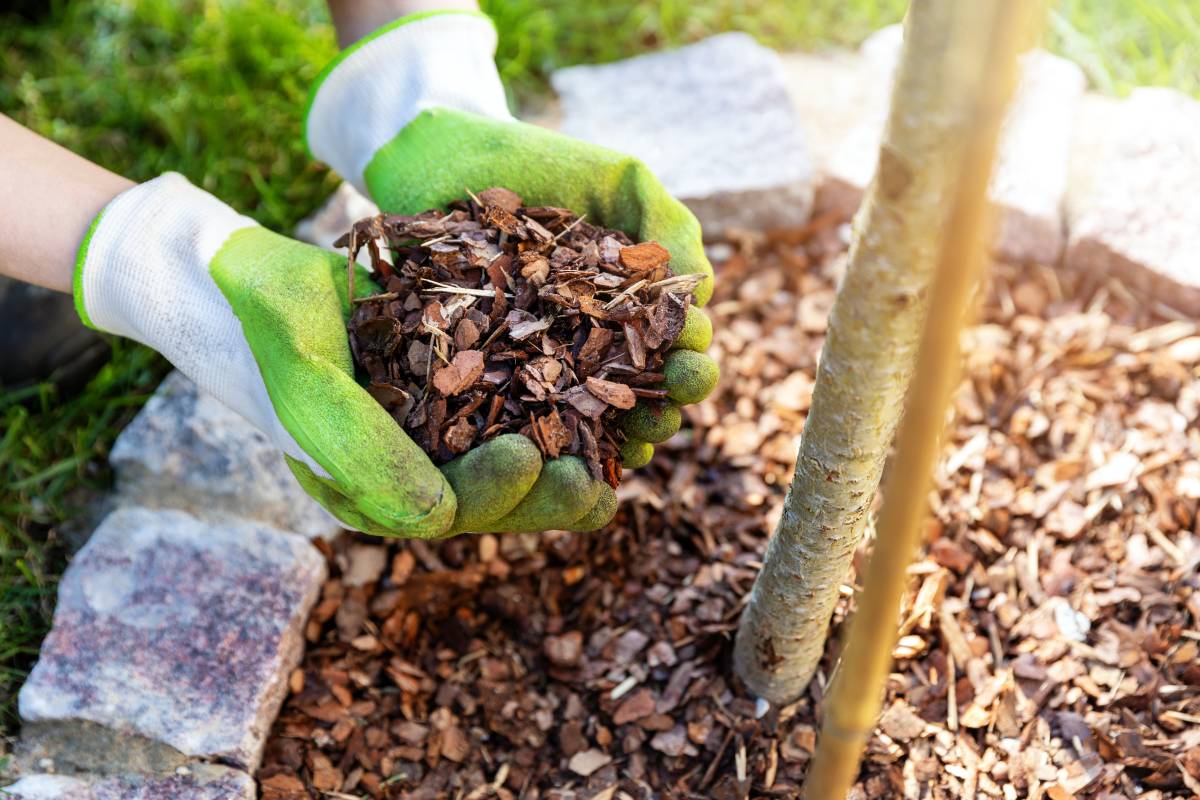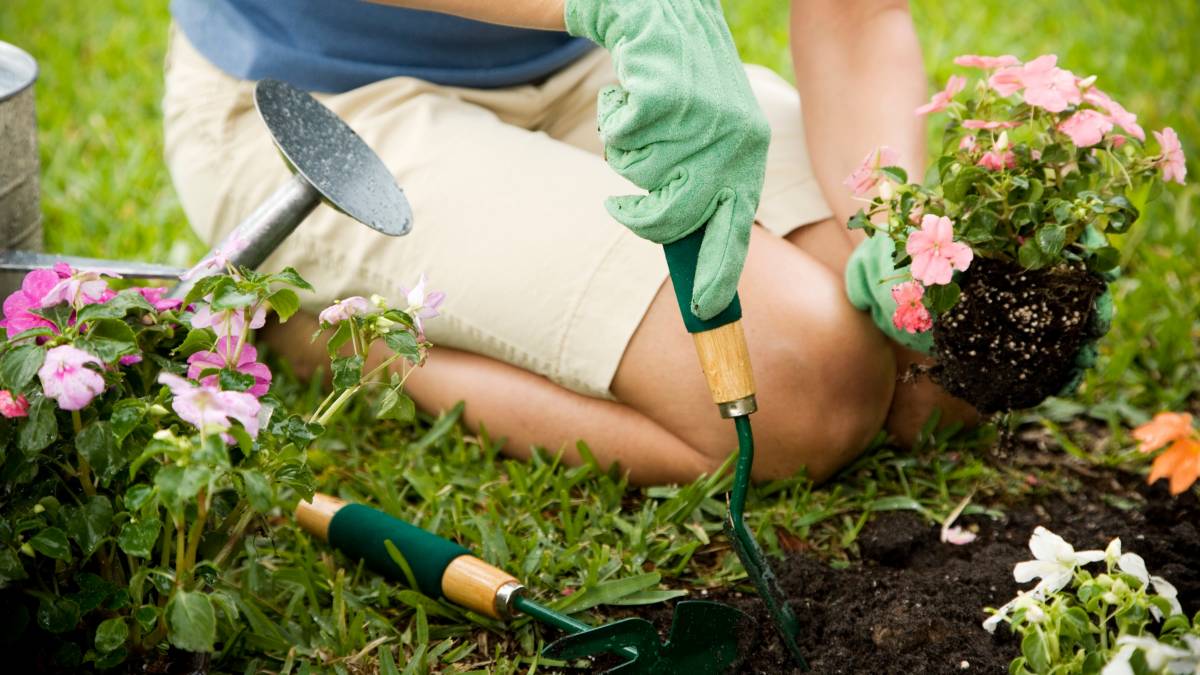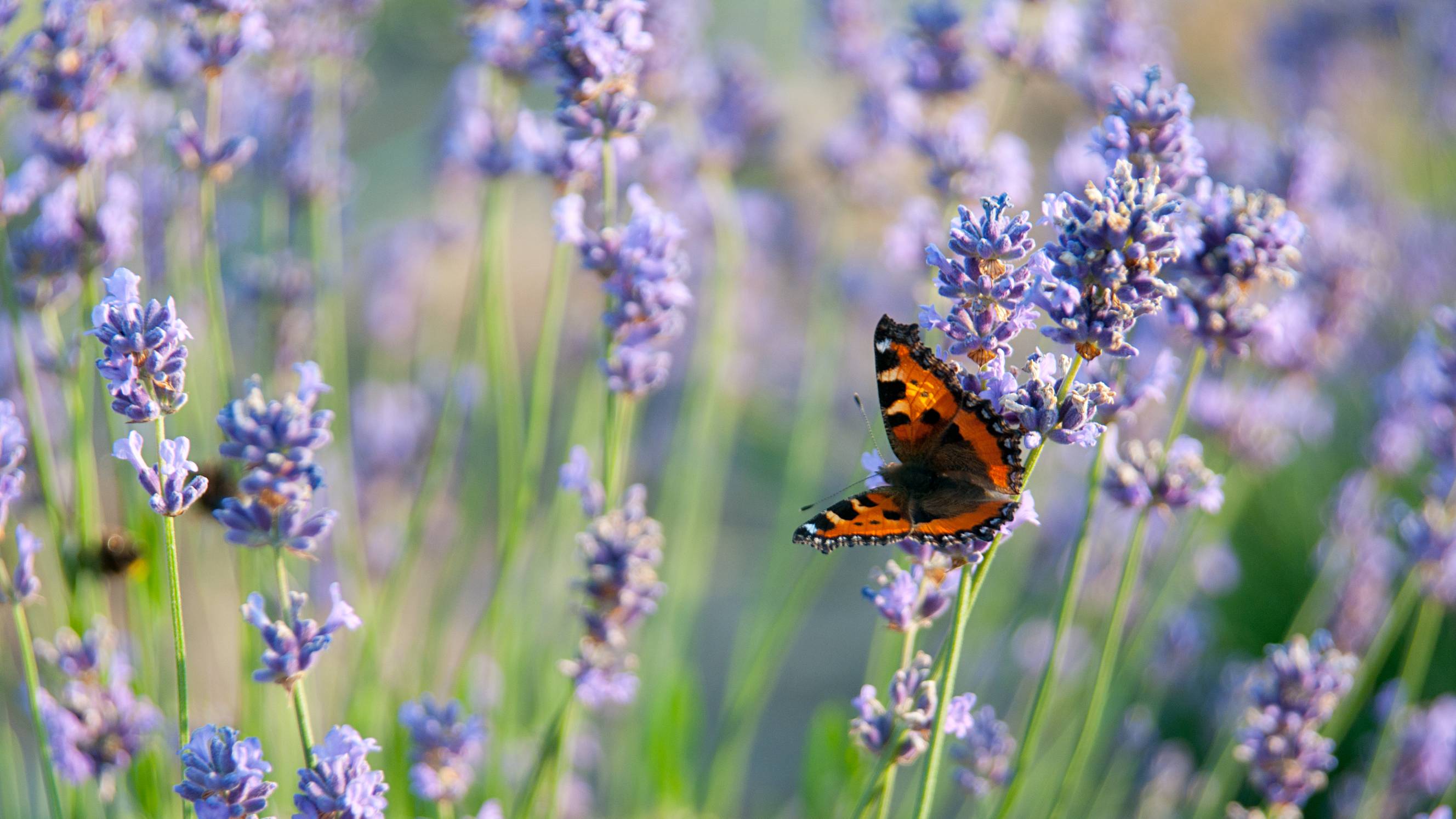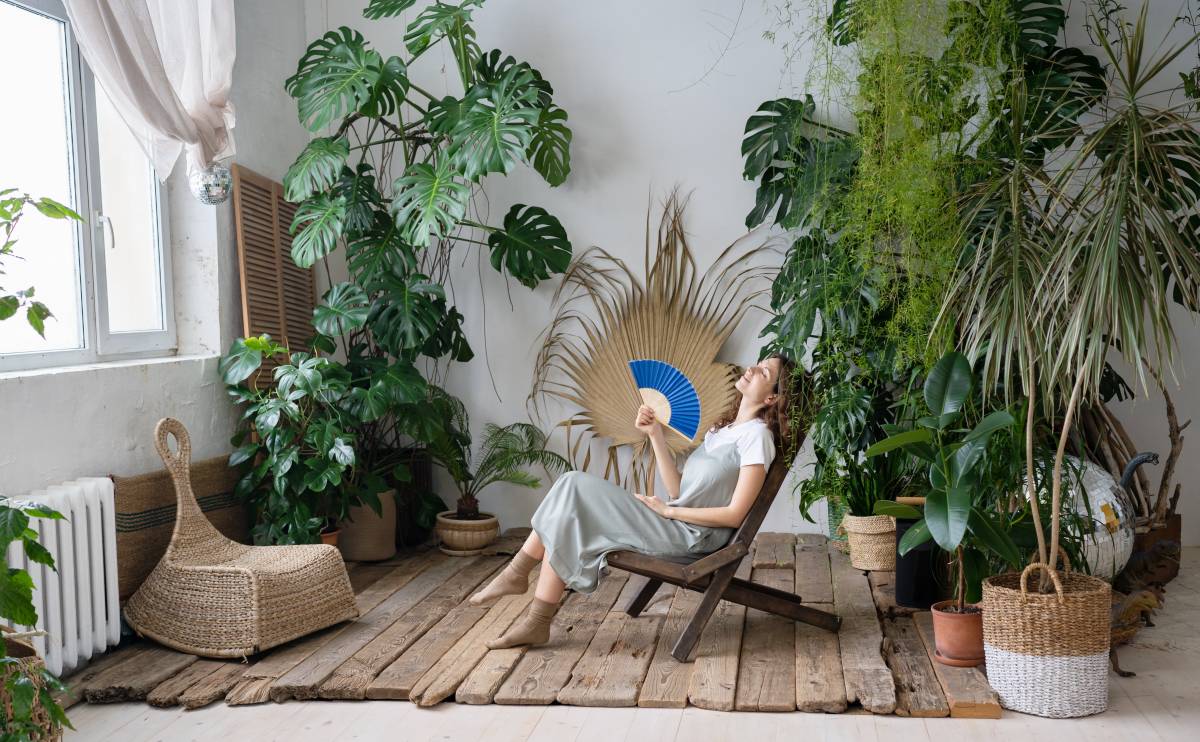- Home/
- Guides/
- Hedge Trimming/
- How to Trim Hedges
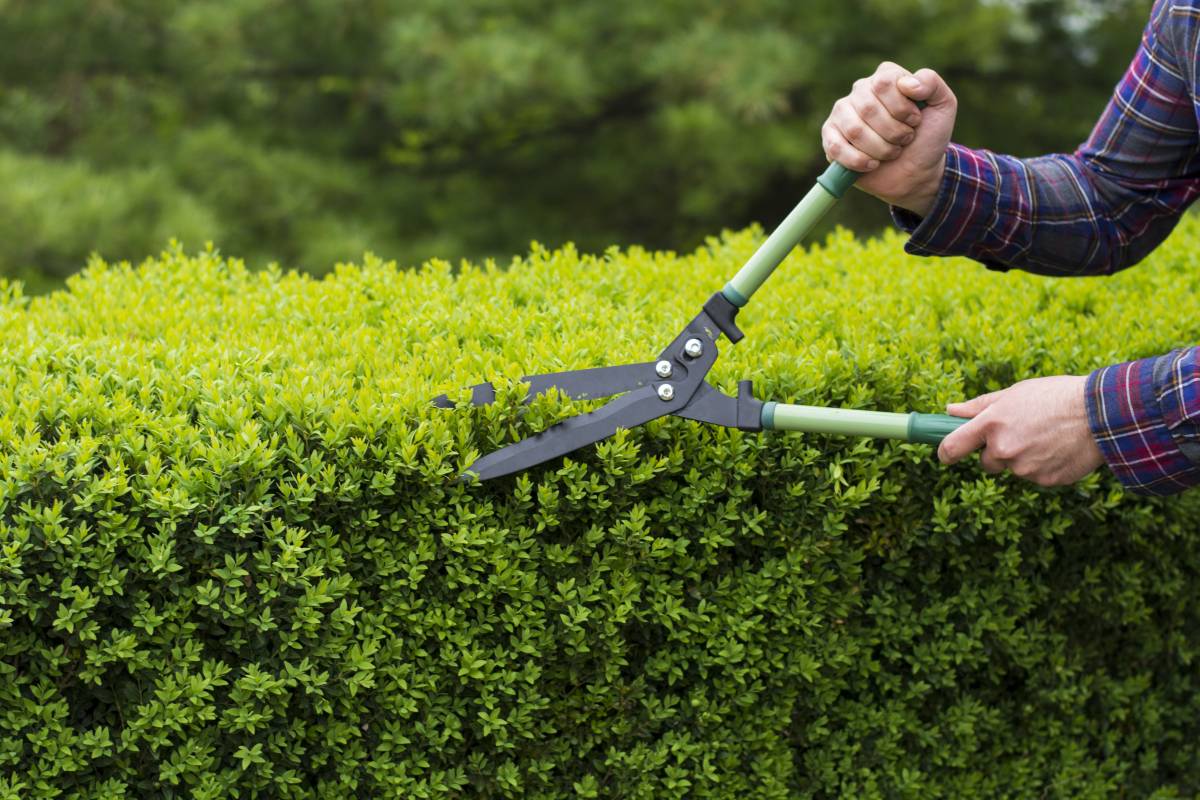
How to trim hedges: a step-by-step guide
Find a hedge trimming expertLast Updated on
As a homeowner, you always want to keep your garden well-kept and neat. You can have someone maintain your garden to keep your plants in check, but you might also want to explore doing things on your own.
Whether you had it designed by a gardener or you did it yourself, your garden should always give you peace and a sense of satisfaction. If you’ve got hedges in your garden and they’re starting to look unruly, they might be due for a trim.
This step-by-step guide will teach you how to trim your hedges the right way.
What hedges are you allowed to trim?
Certain cutting hedge laws tell you which hedges you can trim. Factors include the wildlife in your area, neighbouring properties, and even the height of the hedge. Before taking out your supplies, read on to know what hedges you’re allowed to trim. And if it’s no longer to your liking, you can also read how to remove a hedge here.
High Hedge Laws
The Anti-social Behaviour Act 2003 states that hedges should not exceed two metres in height. If it goes over, your local council will need to get involved to resolve any disputes. Once you see that your hedge is starting to block the light or obscure your neighbour's view, it might be time to bring out the trimmer.
Overhanging edges
These can be tricky if you share a hedge with your neighbour. Make sure that you have a proper sit-down with them to determine who will be trimming which hedge. You can even bring your property deeds to clear who owns the property.
Stay clear of wildlife
Ensure that your hedges or clear of any wildlife before starting the trim. It is a criminal offence to damage or destroy a bird’s nest intentionally. If you see that nesting activity is present, postpone the trim to later in the month.
Tools you’ll need to trim your hedges
You always want to have the best tools for trimming hedges. Be a responsible homeowner, by having the following tools ready in your shed:
Cordless hedge trimmer - Make things easy for you by going cordless. Try to find a lightweight model that will make it easy for you to cut hedges that have grown a bit taller.
Branch cutter - This is an accessory that can come with hedge trimmers. These are designed to cut through branches more than 60mm thick.
Ladder - Always have a step ladder that is steady and durable for you to use, even with a hedge trimmer on hand.
Shears - You can choose to use shears when you are cutting small-leaved hedges.
When do you prune and trim hedges?

Do you always ask yourself when hedge cutting season is? It's not the same for everyone since it depends on what kind of hedge you have. Despite the different cutting seasons, you should always ensure that you do a maintenance trim for formal hedges at least twice a year. Below are some of the hedge cutting seasons you can note:
May to September: Trim Privet Hedges every few weeks during this time.
June & August: These are the best months to cut Hawthorn hedges since June marks the end of flowering. On the other hand, trimming them in August makes them look less ragged during the winter.
June & September: Trim Hornbeam hedges twice a year to get a denser age, Be sure to do this at the beginning of June & September.
How to trim your hedges
There are different ways to classify hedges. They can be upright plants, deciduous plants, and conifers. Because of this, you will need to pay extra attention to how you need to trim the hedges to maintain their desired shape and form.
The steps below walk you through how to trim your hedges:
Step 1: Trim the body of the hedge
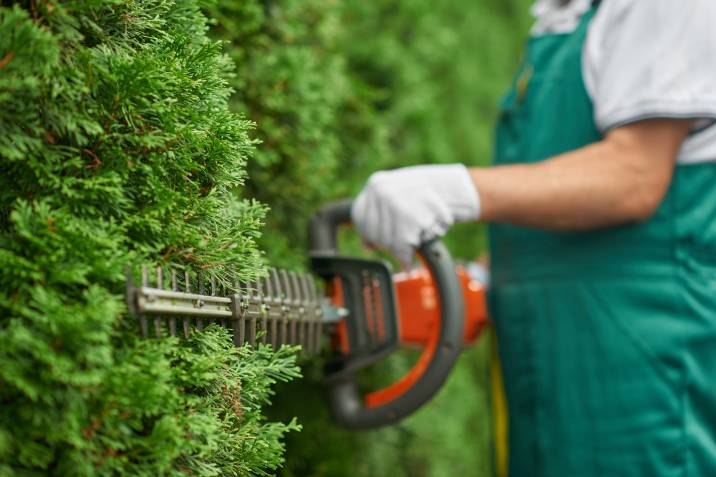
Using a hedge trimmer, start at the near bottom of the hedge and work your way upwards. Move your trimmer at a slow, stable pace to control its motion.
Step 2: Trim the sides
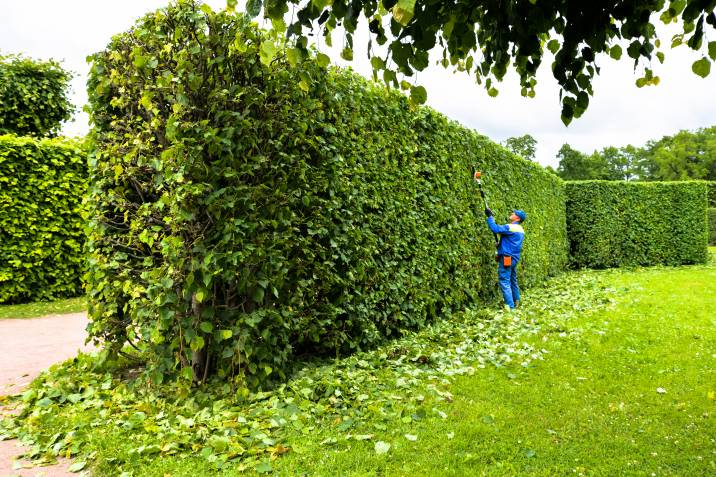
Hold your trimmer at a 10-degree angle when you trim the sides of the bush. This allows your hedges to be wider at the bottom and slightly narrower at the top. Having your hedge in a tapered shape helps sunlight reach your hedge's lower branches and roots.
For upright plants such as hawthorn, privet, and evergreen hedges, you should trim the back of its sides to its top every four to six weeks. This will help you maintain the shape of your hedge.
Step 3: Trim the top of the hedge
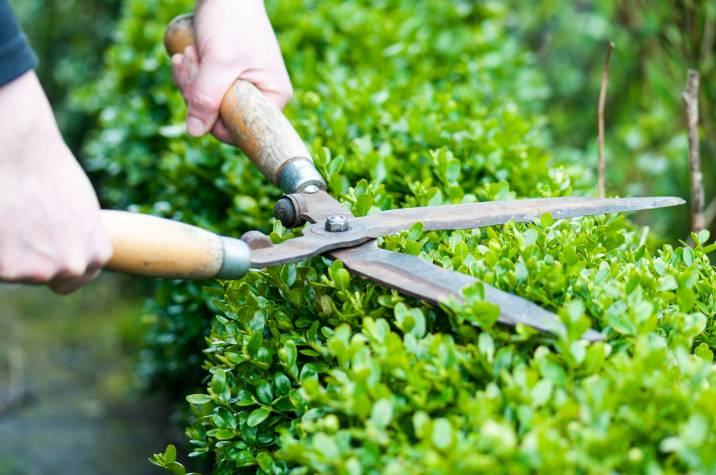 Level your hold on your hedge trimmer to cut the top of your hedge flat. Use guided left-to-right and right-to-left motions as you trim the top of the hedge.
Level your hold on your hedge trimmer to cut the top of your hedge flat. Use guided left-to-right and right-to-left motions as you trim the top of the hedge.
For hedges with a naturally bushy base like the beech and hornbeam hedges, you can clip or trim the top of your hedge to a shape that will taper at the top. This shape will complement its bushy base. Be sure to do this twice every year after flowering season.
When it comes to your conifers, you will need to clip your hedges to the shape you want three times a year. This is best done during the summer until late August. Be sure to stop the leading shoot of conifers to its desired height so that it will not re-grow.
Step 4: Clean up your mess

Using a blower, you can get rid of excess debris in your hedge. Sweep away any branches and leaves you’ve trimmed to give your hedge a neat and pristine look.
Get extra help from a gardener
If you still feel apprehensive about trimming and pruning your hedge, you can always hire a hedge trimmer to get the task done for you. Don’t put off trimming your hedges: Post a task today!
Related articles
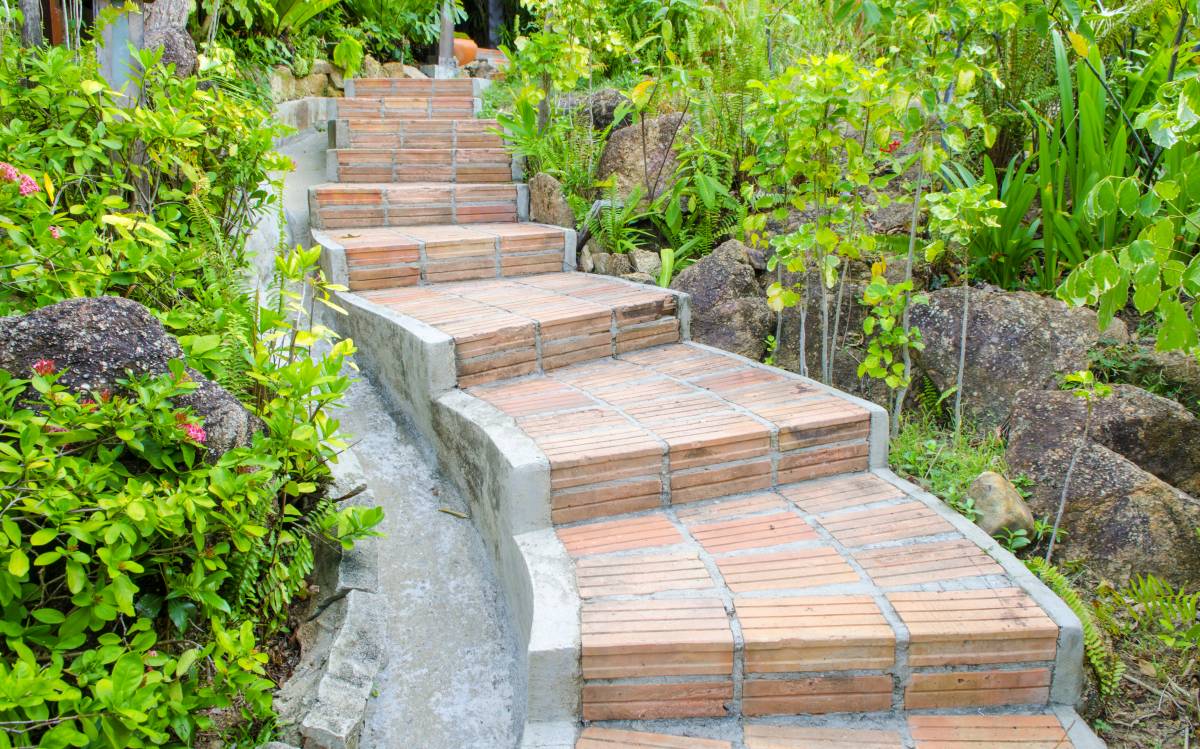
How to build garden steps
Read more

How to trim bushes the right way
Read more
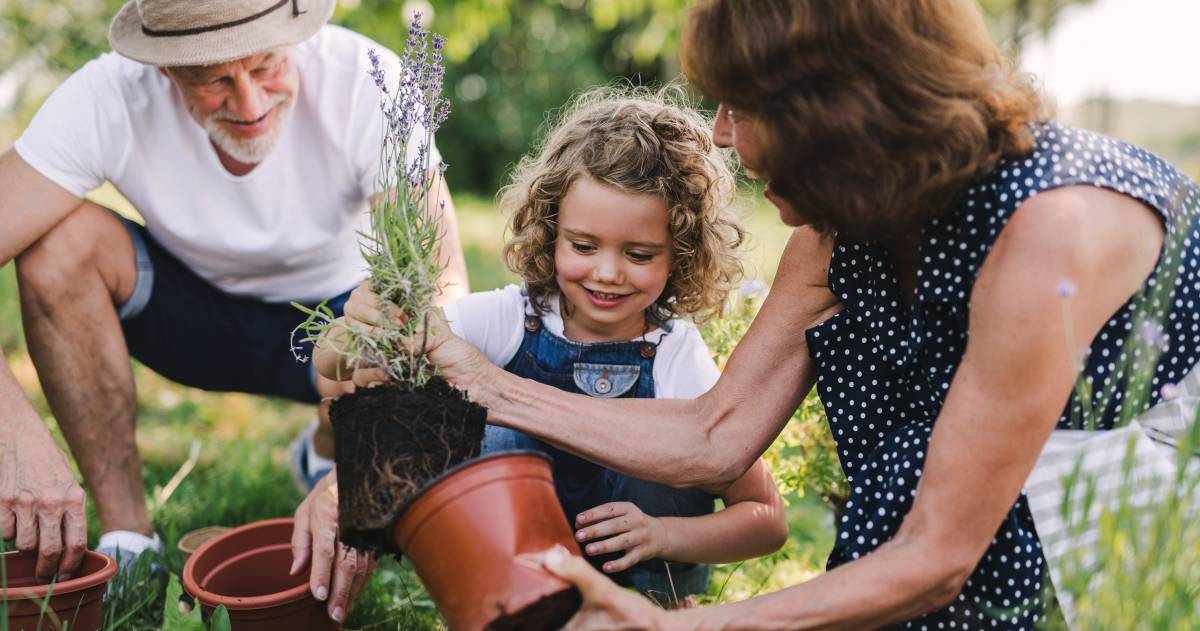
13 Best Spring Gardening Tips
Read more

How to clean garden stones
Read more

36 Quirky plant pot ideas you’ll love
Read more

Your garden maintenance checklist
Read more

How to prune roses the right way
Read more

8 steps to build a DIY pond filter
Read more
Related price guides

How much does a garden room cost?
Read more

How much does weeding cost?
Read more

How much do gardeners charge?
Read more

How much does mulch cost?
Read more

How much does garden clearance cost?
Read more
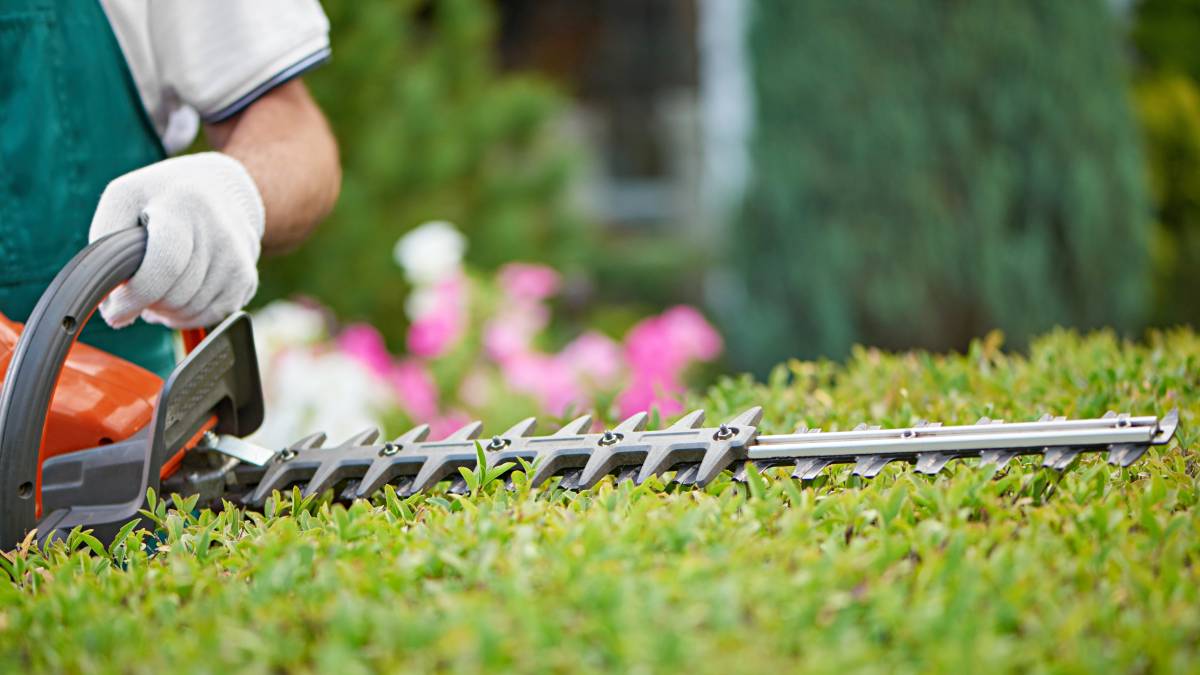
How much does hedge removal cost?
Read more




